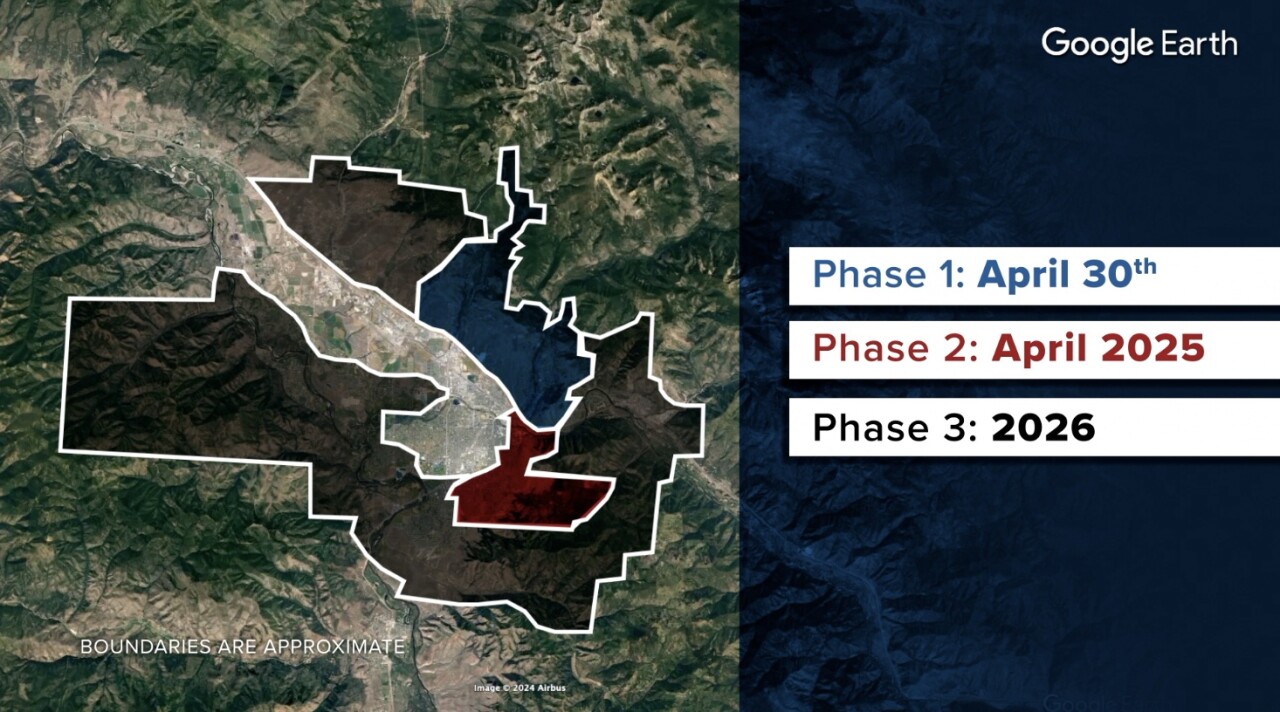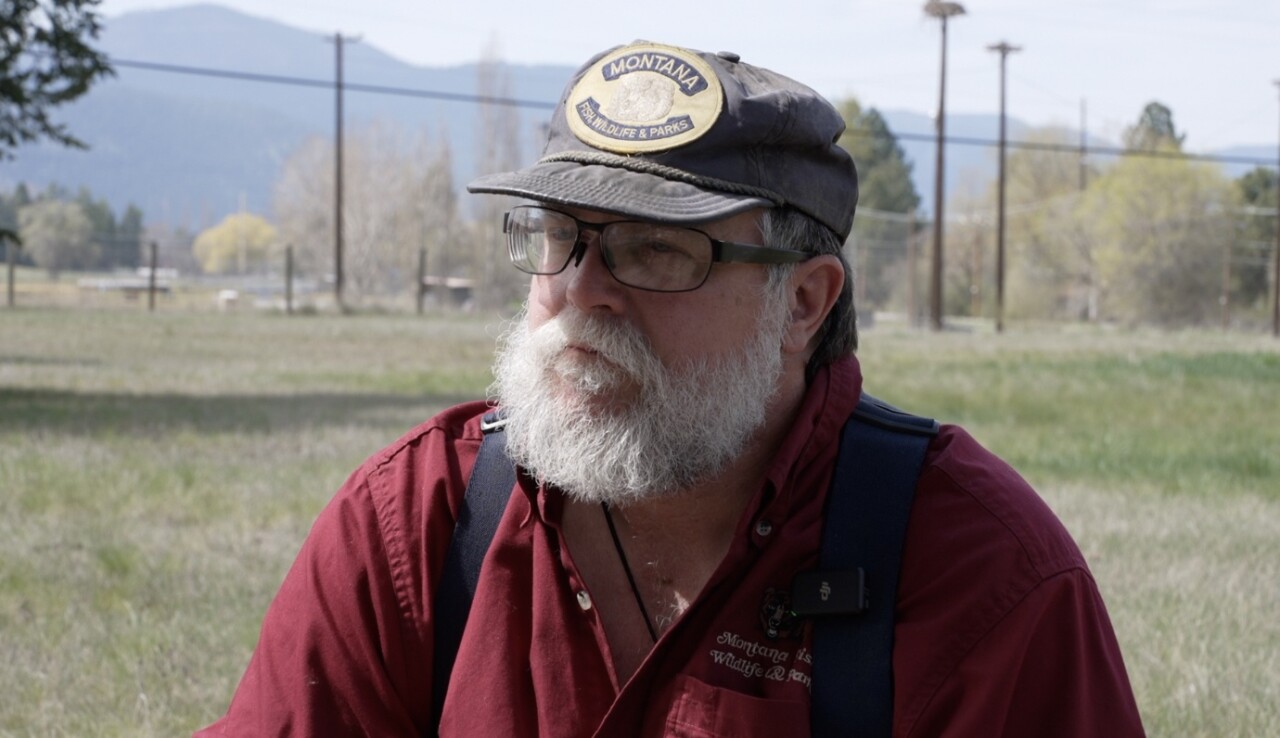MISSOULA — The phrase, “a fed bear is a dead bear” is often heard in Western Montana, but a new Missoula city and county ordinance will look to protect both bears and humans.
The new Bear Buffer Zone in Missoula will require certain areas to use a bear-proof trash can. The first neighborhoods that must abide by the ordinance are the Grant Creek and Rattlesnake areas.
The City of Missoula and Missoula County agreed last fall to change the previous ordinance regarding bear-proof trash cans, which only addressed city lands.
“We'd have everyone doing everything right within the city boundaries, but then just across the street, if someone lived in the county, they could do anything they wanted to,” Montana Fish, Wildlife and Parks Regional Bear Specialist James Jonkel says.
The new regulations will be rolled out in three phases.
The first phase will begin on Tuesday, April 30, 2024, and involves the Grant Creek and Rattlesnake neighborhoods.
The second phase will cover the southern part of the Rattlesnake to Pattee Canyon and part of Fairviews by the University of Montana. This phase will begin in April 2025.
The third phase will engage the rest of the Bear Buffer Zone, which includes East Missoula to Bonner, and the Miller Creek, Butler Creek and O’Brien Creek areas. This will be completed in 2026.
On Sept. 1, a Potomac Bear Buffer Zone will also be implemented.

The City of Missoula and Missoula County decided to start the regulations in the North Hills area because FWP responds to a large amount of bear-human conflicts in those neighborhoods.
Jonkel estimates that the Missoula Valley is home to 200 bears, including, at times, 40 in the Rattlesnake drainage area.
The high concentration of bears in an urban interface means the animals are often face to face with human food or domesticated animals.
“They can't help themselves if there's garbage or there's bird feeders, and so it's very easy for those sort of bad behaviors to be learned,” Jonkel says.
The “bad behaviors” lead to more than just spilled trash. Many bears will continue, either further into the city or further into the property– breaking through patios or garage doors.
Once a bear has pushed too far into a homeowner's space, FWP is forced to relocate or often kill the bear.
“I tell you, I've been at the same places over and over and over again the last 20 years, and, you know, the human behaviors haven't really changed,” Jonkel says. "So, it's my hope that this ordinance will really help with that.”
When residents on the outer edge of Missoula leave trash out, hang bird feeders in open spaces, or don’t keep animals in an electric fence, they can encourage bears to rely on the city food.
The new ordinance will look to stop this behavior, in both humans and bears, before the animal gets further into the city.
“In essence, it's like a fence, but it's an invisible fence,” Jonkel says. “It's a behavioral barrier where the homeowners and the town or the communities are essentially running a really tight ship along the edges so that when bears and other creatures come to the edges, they won't learn those sort of bad behaviors.”

Jonkel hopes to see Missoula bears unlearn the bad behaviors in two to three years, however immediately, the behaviors may escalate.
Many bears in and around Missoula are “food conditioned,” meaning they rely heavily on trash cans or bird feeders to stay fed. After those are taken away, the bears may resort to more extreme attempts, according to Jonkel.
“Some of these bears, you know, that have been so used to eating garbage and having it available, are not gonna have that garbage available,” he says. “So we might see some bears, you know, escalating their attempts– trying to open a garage door, that kind of thing.”
Another reason bear-human conflicts may rise this summer is due to a relatively dry winter.
Natural bear food — including huckleberry, choke cherry and other berry bushes that are common for the Missoula Valley — rely on heavy snowfall and spring rain to thrive throughout the summer and into the fall.
“It was an unusual winter and an unusual year,” Jonkel says. “I'm worried that we don't have enough snowpack and moisture to carry us through the summer, and the bears need that moisture for natural bear foods. If we get a freeze, it could really damage the berry crop in the fall. And then if it just stays really, really dry– we don't get enough rain, it'll damage the berry crop as well… I'm kind of expecting a bad fall for bear-human conflicts.”
Residents who use Grizzly Disposal or Republic Services should not have to worry about their trash cans — the garbage companies will replace the cans automatically.
Missoula residents can also bear-proof their own trash cans by building an enclosure or garbage rack. Every DIY bear-proof trash can needs to be approved by FWP and either Republic Services or Grizzly Disposal.
Small animals, including chickens, pigs or goats, and bee hives should be fully enclosed in an electric fence.
There are programs that can financially assist homeowners in building a fence, including the Defenders of Wildlife incentive program, which will reimburse 50% of the cost of an electric fence up to $500.
FWP is able to relocate bears that have not yet been destructive to property — a bear that is seen in the yard can be saved, but a bear that attempts to break into a garage will likely have to be euthanized. This is why FWP asks residents to report bear sightings as soon as the animal is close to a yard or property line.
Jonkel is also asking residents to report any valid grizzly bear sightings — whether it’s from afar or a clear track. Reports and pictures can be submitted at https://missoulabears.org/report/.
Find more information about the Bear Buffer Zone online at https://missoulacountyvoice.com/bear-smart-missoula.




